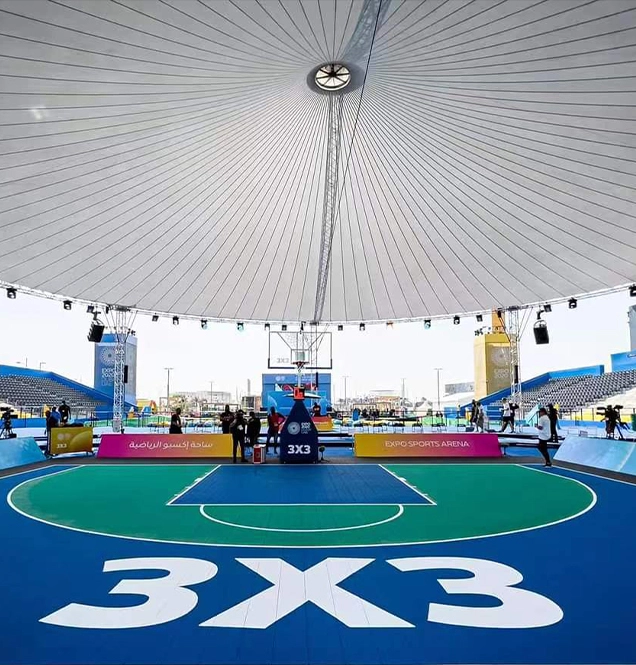Aug . 06, 2024 11:04 Back to list
Choosing the Best Wood Flooring Options for Your Basketball Court Setup and Maintenance
The Essential Guide to Basketball Court Wood Flooring
When it comes to creating an optimal basketball court, one of the most crucial aspects to consider is the flooring. The right wood flooring not only enhances the aesthetic appeal of the basketball court but also significantly impacts player performance and safety. This article will explore the benefits of wood flooring for basketball courts, the types of wood typically used, and maintenance tips to ensure longevity.
The Benefits of Wood Flooring
Wood flooring is favored in basketball court construction for several reasons. Firstly, it provides a superior playing surface. The natural fibrous structure of wood allows for better shock absorption, which means less impact on players’ joints during high-intensity games and practices. This benefit is particularly important in competitive sports, where the risk of injury is a constant concern.
Additionally, wood flooring offers excellent traction for athletes. The right type of finish can create a surface that allows for quick cuts and sudden stops without compromising grip. This quality is essential for basketball, as rapid movement in various directions is a fundamental part of the game.
Moreover, wood flooring contributes to an appealing visual environment. A polished wood court exudes professionalism and sophistication, attracting teams, fans, and sponsors alike. Unique staining and design patterns can also make a basketball court stand out, showcasing a team’s identity and culture.
Types of Wood Commonly Used
The type of wood chosen for basketball courts is integral in determining the quality of play. The most commonly used woods include maple, birch, and oak.
Maple is the most preferred choice due to its durability and hardness, which can withstand the impact of constant gameplay. It has a fine grain that provides a smooth surface, making it ideal for the high-speed action of basketball. Maple also tends to have a natural light color that makes a basketball court look bright and inviting.
basketball court wood flooring

Birch is another great option, known for its strength and as a more cost-effective alternative to maple while still maintaining good performance characteristics. It offers similar shock absorption properties but is less common in high-profile venues.
Oak is less frequently used as a primary wood for basketball courts due to its more pronounced grain and slightly denser nature. However, it is sometimes used in hybrid designs to improve specific aspects of flooring performance.
Maintenance Tips
To keep a hardwood basketball court in top condition, regular maintenance is essential. First and foremost, players should be required to wear appropriate footwear to avoid excessive wear on the surface. Shoes with non-marking soles are crucial to maintaining the wood’s integrity.
Cleaning the court regularly helps prevent dirt and grime buildup, which can affect traction and overall player safety. This involves sweeping or vacuuming the surface followed by mopping with a wood-safe cleaning solution.
Finally, periodic refinishing is necessary to restore the court's original sheen and protect the surface. Depending on usage, this could mean refinishing every few years. Protective finishes not only enhance the wood's appearance but also add a layer of durability against scratches and scuffs.
Conclusion
Choosing the right wood flooring for a basketball court is a vital decision that influences both performance and safety. Maple remains the gold standard, with its unmatched resilience and smooth surface, while other woods like birch and oak can serve specific needs in certain environments. By implementing proper maintenance practices, one can maximize the lifespan and functionality of a basketball court's wood flooring, ensuring it remains a source of enjoyment and excellence for players and fans alike.
-
Durable Plastic Pickleball Court Tiles Versatile Commercial Plastic Flooring Solutions
NewsJul.05,2025
-
Optimal Height for Indoor Pickleball Court Meet Official Standards & Enhance Play
NewsJul.05,2025
-
Premium Pickleball Basketball Sport Court Tiles – Durable, Versatile, Easy Installation
NewsJul.05,2025
-
Converting Tennis Court to Pickleball Fast & Affordable Solutions for Any Facility
NewsJul.04,2025
-
Professional Tennis Court Lining Services Pickleball Court Marking Experts
NewsJun.24,2025
-
Pickleball Court for Sale - Premium Flooring Solutions for Sports Venues
NewsJun.10,2025

